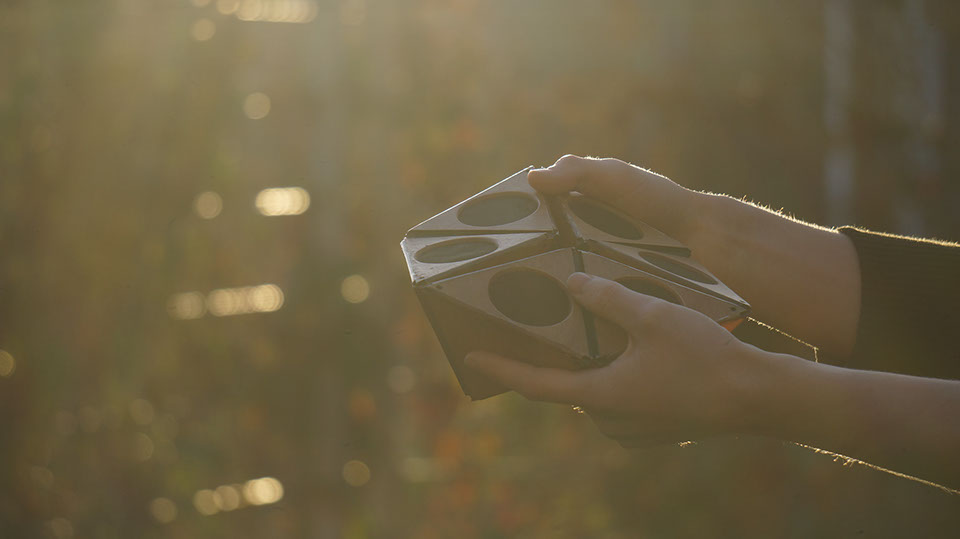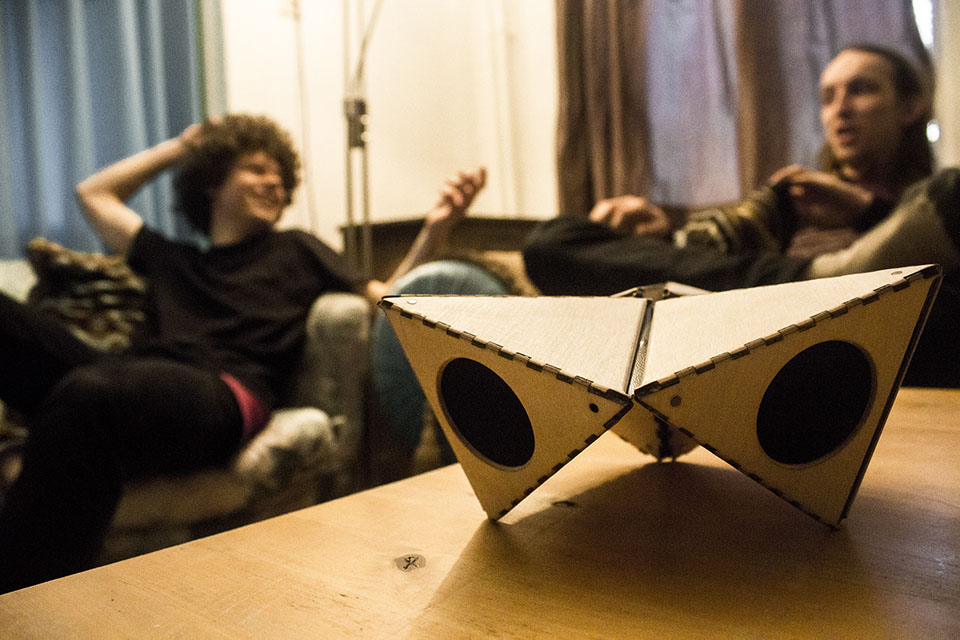GROWTH
WORK

Mugen ("infinite") is a shape-changing speaker, that can be infinitely rotated around its own axis. Music is controlled by directing the speakers. Rotating the speakers upwards and outwards the volume is increased to the max; rotating the speakers downwards decreases the volume. The aethetic of interaction is based on the blooming of a flower.
Mugen is portable, features a bluetooth and is finely finished with cherry wood, leather and magnets.
Music embodied
Shape-changing interface
Rich & tangible interactions
Reciprocality
In collaboration with:
Sho Suzuki, Erik Wubbels, Paul Meulendijks
%20(2018_10_11%2019_55_58%20utc).png?crc=112678611)
MUGEN
OVERVIEW
B2.1. Project: Tangible and Reciprocal Shape-Changing Interfaces
Goal: Create a tangible interface that can change and regain its shape in a home context
Competencies: CA, TR, US, BE, TC
KEY LEARNING POINTS
1. Directing exploration within a design theme through literature and frameworks
2. Making ideation tangible in interaction models, material and experience prototypes.
3. The great use (essence, aesthetic, branding) and limits (clarity) of abstraction in graphics.
4. Vision; applying sensory experience of interactions to embody advanced concepts.
5. The power of simplicity to give others room for interpretation and finding meaning.
Explanation
We developed knowledge of the philosophy and applications of shape-changing interfaces by reading literature and looking in our everyday surroundings for tangible interactions; from two-state buttons to morphable clay. Through the Interaction Frogger Framework we analyzed the digitalized interfaces in the home context where we lost our tangible control. Music interfaces feature an interesting combination of sensory feedback (sound), control (simple to advanced) and input actions (touchscreen) are disconnected from the emotional and aestetical experience of music itself.
The final product was a great success. We defined clear and simple values for our interaction early on and the process was focused on creating a product that emphasized the richness and novelty.
Reflection
Tangible interactions was clear, but shape-changing and reciprocal was much more difficult to understand and think of. Reading the work of Hiroshii Ishii of MIT Tangible Media Lab and his Material User Interfaces, radically changed my idea of interfaces and their value in connecting us humans and our own body to the sensory experience of our environment.
I got to understand various tangible qualities through material exploration, particularly by creating hybrid materials; combining sturdy materials (leather, plastics, wood) with morphables (elastic, clay, wire). What especially interests me is the unique motion qualities of materials, especially paper caught my attention.
In the following embodied interaction workshop, we mimiced motions in nature with our own movements. Connecting sound with the details in my movements, gave me practical insight in what reciprocality means and intuition, interaction and feedback are inherently linked in design. This sparked my interest in sensory perception psychology and the motions in our everyday. With a deeper understanding of the design theme gave us very directed way of conceptualizing values.
I found our motion qualities in origami, folding paper; resistance, elasticity, directed motion.
My biggest addition was in my analyzation of the theme's concepts and translating them into a tangible form. My design sketches were graphically attractive, abstracted the shape and were used for our logo and branding. However, they proved difficult to convey the interaction experience itself. I learned how to communicate the wholeness of a concept with 3D interactions (cardboard), showcasing the materials, simple experience prototypes (wizard of Oz) in addition to my sketches.
I contributed to the ideation, but found it difficult to take initiative in the following process. My flexibility and lack of attitude lead to spending most of my time realizing the various prototypes. In our personal feedback, I got the advice to be confident in choosing tasks that I was not experiened in. Later, this helped me to recognize my own strengths and weaknesses in later projects; to be flexible in joining perspectives, but also speak my mind and convince others. While not a natural leader or debater, I am good in using my analysis to change the perspective of others, stronger willed, to influence the process.
.jpg?crc=471563241)

